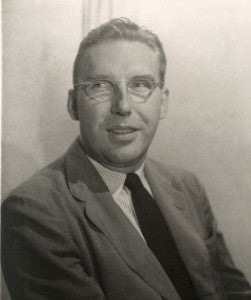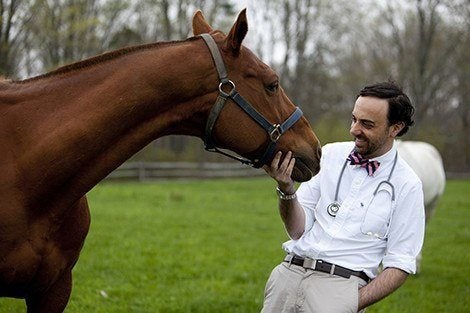Veterinarians and public health
Mark Schembri, MPH ’11, never met James Steele, MPH ’42. But in his passion for understanding animalborne epidemics, Schembri is carrying on Steele’s powerful legacy.
Steele—the lone veterinarian in a class of physicians at HSPH, and only the second vet to attend the School— is known as “the father of veterinary public health.” He launched the Veterinary Public Health division of the U.S. Centers for Disease Control and Prevention (a model adopted by the World Health Organization and other international agencies), served as the first Assistant Surgeon General for Veterinary Affairs, spearheaded research that led to the development of a safe and effective rabies vaccine, directed interventions that contained and prevented such infections as brucellosis and salmonellosis, and in 1959 nearly died from a vicious form of H7N7 avian flu. Steele currently serves as professor emeritus at the University of Texas School of Public Health.
Schembri’s passion for understanding zoonoses—infections transmitted from animals to humans—is a natural extension of Steele’s pioneering work. “Harvard leads the world in dealing with infectious disease outbreaks,” said Schembri, a veterinarian and horse specialist in Australia, explaining why he came halfway around the world for his degree. “Whether it’s cholera in Haiti or anthrax in New York, Harvard plays a role in prevention and response. I wanted to learn from one of the greatest universities how to approach these threats.”

Three-quarters of emerging infections—from SARS to bird flu to HIV/ AIDS—begin in animals and then jump to humans. It is no exaggeration to say that the future of humankind will in part hinge on gaining a better understanding of the complex and mysterious paths of cross-species transmission. One of the earliest to recognize this truth was Steele. “Human and animal health are inextricably linked,” he observed. “They always have been. They always will be.” The same could be said of the passion that Steele and Schembri bring to their shared profession. Having, like the School itself, turned 100 in 2013, James Steele is believed to be HSPH’s oldest living alumnus.
